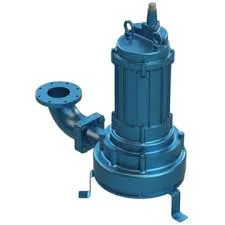Estonian
- Afrikaans
- Albanian
- Amharic
- Arabic
- Armenian
- Azerbaijani
- Basque
- Belarusian
- Bengali
- Bosnian
- Bulgarian
- Catalan
- Cebuano
- Corsican
- Croatian
- Czech
- Danish
- Dutch
- English
- Esperanto
- Estonian
- Finnish
- French
- Frisian
- Galician
- Georgian
- German
- Greek
- Gujarati
- Haitian Creole
- hausa
- hawaiian
- Hebrew
- Hindi
- Miao
- Hungarian
- Icelandic
- igbo
- Indonesian
- irish
- Italian
- Japanese
- Javanese
- Kannada
- kazakh
- Khmer
- Rwandese
- Korean
- Kurdish
- Kyrgyz
- Lao
- Latin
- Latvian
- Lithuanian
- Luxembourgish
- Macedonian
- Malgashi
- Malay
- Malayalam
- Maltese
- Maori
- Marathi
- Mongolian
- Myanmar
- Nepali
- Norwegian
- Norwegian
- Occitan
- Pashto
- Persian
- Polish
- Portuguese
- Punjabi
- Romanian
- Russian
- Samoan
- Scottish Gaelic
- Serbian
- Sesotho
- Shona
- Sindhi
- Sinhala
- Slovak
- Slovenian
- Somali
- Spanish
- Sundanese
- Swahili
- Swedish
- Tagalog
- Tajik
- Tamil
- Tatar
- Telugu
- Thai
- Turkish
- Turkmen
- Ukrainian
- Urdu
- Uighur
- Uzbek
- Vietnamese
- Welsh
- Bantu
- Yiddish
- Yoruba
- Zulu
Telephone: +86 13120555503
Email: frank@cypump.com
aug. . 16, 2024 19:28 Back to list
Comparison of Effluent Pumps and Sump Pumps for Effective Water Management Solutions
Effluent vs. Sump Pumps Understanding the Differences and Uses
When it comes to managing wastewater and ensuring the proper drainage of excess water from various environments, two types of pumps frequently come into play effluent pumps and sump pumps. While both serve the purpose of moving water, they have distinct characteristics and applications that should be understood to select the right type for a specific need.
What is an Effluent Pump?
An effluent pump is specifically designed to handle wastewater that contains solid particles. These pumps are often used in applications where the water is not clear—such as in septic systems, where treated wastewater is discharged into a drain field or a leach field. Effluent pumps typically have a higher horsepower and are built to handle semi-solid waste, making them suitable for moving effluent from septic tanks to treatment areas.
The construction of an effluent pump includes a motor that powers an impeller capable of breaking down solids in the wastewater. Effluent pumps usually operate with a floating switch that activates the pump when the water level rises above a certain point. They can typically move water vertically for long distances, which is crucial in systems where the discharge point is above the tank level.
What is a Sump Pump?
On the other hand, a sump pump is primarily used to remove excess water that accumulates in a sump basin, commonly found in basements or crawlspaces. The primary role of a sump pump is to prevent flooding and control moisture levels to protect the structural integrity of a home or building.
effluent vs sump pump

Sump pumps are generally designed for clear water, which means they are not equipped to handle solid waste. Instead, they are efficient at pumping out groundwater or rainwater that collects in the sump pit. There are two main types of sump pumps submersible and pedestal pumps. Submersible pumps operate underwater, while pedestal pumps are mounted above the sump pit, using a long pipe to draw water up.
Key Differences
The primary differences between effluent and sump pumps stem from their design and intended applications. Effluent pumps can handle solids and are used in septic systems or greywater situations, while sump pumps are designed for clear water removal and primarily focus on groundwater or excess rainwater.
Additionally, effluent pumps typically have a higher capacity for head pressure, enabling them to push water over longer distances and elevations. They can also operate in more demanding environments, owing to their robust construction. Conversely, sump pumps are generally less expensive, simpler in design, and sufficient for residential water management.
Choosing the Right Pump
When selecting between an effluent pump and a sump pump, it is vital to consider the specific needs of your system. If you’re dealing with wastewater that includes solids, an effluent pump is essential. However, if your goal is to manage groundwater or prevent flooding in basements, a sump pump will suffice.
In conclusion, understanding the distinctions between effluent pumps and sump pumps is crucial for effective water management. By selecting the suitable type of pump for your specific circumstances, you can ensure efficient operation and prevent potential water-related issues in your property. Whether for home use or more complex wastewater management systems, each pump serves a vital role in maintaining safe and efficient water handling practices.
-
ISG Series Vertical Pipeline Pump - Chi Yuan Pumps Co., LTD.|Advanced Hydraulic Design&Energy-Efficient Solutions
NewsJul.30,2025
-
ISG Series Vertical Pipeline Pump - Chi Yuan Pumps Co., LTD.
NewsJul.30,2025
-
ISG Series Vertical Pipeline Pump - Chi Yuan Pumps Co., LTD.|energy-efficient fluid handling&industrial durability
NewsJul.30,2025
-
ISG Series Vertical Pipeline Pump - Chi Yuan Pumps | Advanced Engineering&Industrial Efficiency
NewsJul.30,2025
-
ISG Series Pipeline Pump - Chi Yuan Pumps | High Efficiency, Energy Saving
NewsJul.30,2025
-
ISG Series Vertical Pipeline Pump-Chi Yuan Pumps|High Efficiency&Reliable Performance
NewsJul.29,2025










